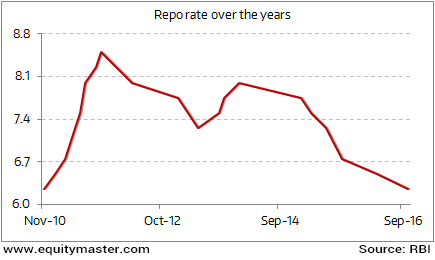It's a cruel summer in the markets. The "May effect", an annual phenomenon investors have come to dread, appears to be taking shape again. Consider this. The market went on a correction course on 13 April and the Sensex shed 1,368 points over the next five days. The Sensex fell by another 270 points on 22 April and hit a low of 27,400, before bouncing back with a modest gain of 214 points. The Nifty also recovered from a low of 8,300 on 22 April. However, the pull-back was short-lived and both the Sensex and Nifty lost 155 points and 31 points respectively on 23 April.
May and October can be tough for stock investors (see chart). In fact, the May weakness is a global phenomenon which has given birth to the market adage, "Sell in May and go away."
Though called the May effect, the correction doesn't happen exactly according to the calendar month always. For example in 2011, the major sell-off started on 21 April and lasted till 25 May (see table). It did not happen at all in 2014 thanks to the election results— a business-friendly government was elected with a clear majority. Instead of the normal correction, the honeymoon took the market to new all-time highs. Now that the market's honeymoon with the government is over, what is going to happen in 2015? The general expectation among experts is that the May effect will be clearly visible this year because several other negative factors are at work too.
 |
| Investors Should Not Fear The May Effect in Stock Market |
First is the weak set of corporate numbers. "Though it is too early to comment on the overall results, there are some disappointments. While Reliance IndustriesBSE -1.09 % reported good numbers, IT majors like TCS, WiproBSE -0.31 %, HCL Tech, etc disappointed the market," says K. Sandeep Nayak, ED & CEO, Centrum Broking. The disappointment with weak numbers is more this time because the market had factored in a possible turnaround with a stable government. "After a business friendly government came to power, there were hopes that things will improve in a year. As the recovery is still not strong, it is affecting sentiments," says Jigar Shah, CEO, KIM ENG Securities.
Another factor triggering pain is the decision by the Income Tax Department to send minimum alternative tax (MAT) notices to foreign portfolio investors (FPI). According to sources, the department has already issued MAT notices to around 100 FPIs. In some cases, the subject matter dates back 7-8 years, a first in the last 23 years of FPI investment in India. "This retrospective tax is causing a lot of anguish," says Shah. This also raises operational hurdles for the foreign funds. "These funds can't collect MAT retrospectively from the investors who have already redeemed.
This is like trying to collect additional fares from passengers after they have alighted from the bus," says Nayak. After several days of market fall, the Income Tax Department clarified that "FPIs covered under double taxation avoidance agreement (DTAA) will be exempt from MAT".
The pull-back on 22 April can be attributed to this. However, it does not solve the problems of FPIs coming from other countries and the pressures on markets will continue for some time due to this.
There are several other negative factors at play. The meteorological department has predicted below normal monsoon. Rain failure can create problems like high food inflation and reduced rural demand. The fall in international commodities, especially crude, was the main factor that helped bring wholesale inflation to negative levels. The recent pull-back in crude prices may push it once again to the positive territory. Spike in crude prices and a bad monsoon is something our economy can ill afford. It will also force the RBI to delay rate cuts.
However, there is no reason to panic. "Though the Nifty could dip below 8,000 levels, value buyers will emerge. Our Nifty target for December is 9,540 and we are not changing that," says Shah. Long term investors should try to make use of this annual phenomenon. - ETNOW
{{ The Guest Post Blogger organization was not involved in the creation of this content. - Dalvi Prabhakar B, Founder & Digital Manager (SEO,SEM,SMO) }}
